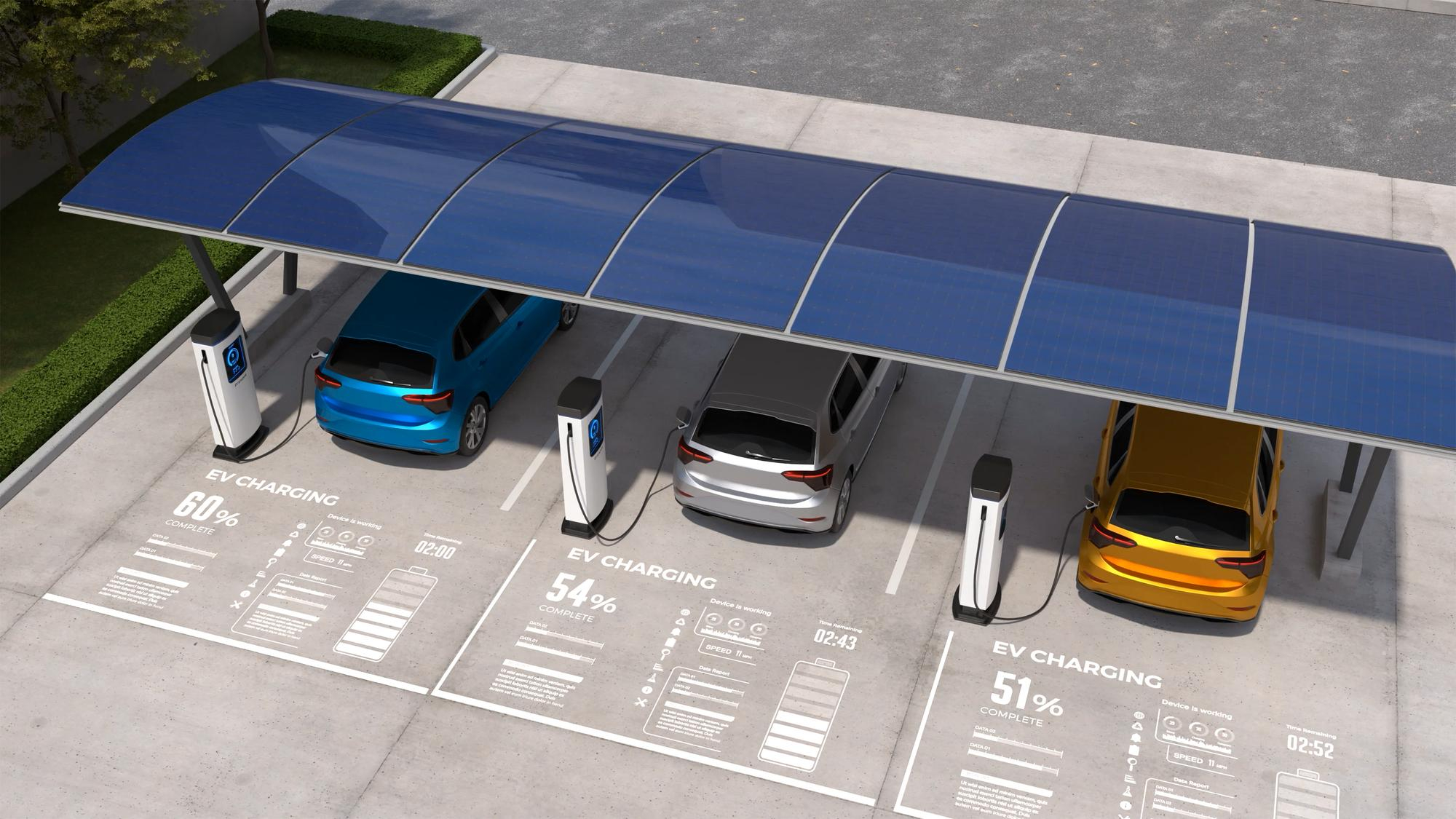Key Considerations When Planning Fleet Electrification: What You Need to Know

Electrifying your fleet takes more than new vehicles — careful planning, smart investment, and the right infrastructure ensure the transition pays off.
Drive Change on the Road to Sustainability with FleetElectrification
In the pursuit of sustainability, fleet electrification has become a pivotal strategy for businesses. Transitioning to an electric vehicle fleet offers a clear path to reducing both carbon emissions and operational costs. As more fleet managers and business owners recognize the dual benefits of environmental responsibility and economic efficiency, the shift to electric vehicles (EVs) is gaining momentum. However, successfully electrifying your fleet requires careful planning and a strategic approach. This guide will explore the key considerations to ensure a seamless transition, with a focus on optimizing operations, managing costs, and building the necessary infrastructure.
1. Understanding Fleet Needs and Usage Patterns
Analyzing Your Current Fleet
The first step in the journey toward fleet electrification involves a detailed analysis of your existing fleet. This includes cataloging your vehicles and evaluating their usage patterns, mileage, routes, and duty cycles.Understanding which vehicles are most suitable for conversion to an electric vehicle fleet is crucial. For instance, vehicles that operate on predictable routes and have daily mileage within the range of EVs are prime candidates for electrification.
Matching Vehicle Range with Daily Needs
To ensure that your fleet operates efficiently, it’s important to align the daily driving distances of your vehicles with the range capabilities of available electric vehicles. Many modern EVs are designed to meet typical daily driving demands, but for vehicles that cover longer distances, you might need to consider models with extended ranges or hybrid solutions.
Evaluating Vehicle Load and Performance Requirements
Different vehicles in your fleet will have varying load and performance needs.It’s essential to assess whether electric vehicles can meet these demands.While EV technology has advanced significantly, particularly in handling heavier loads, it’s important to verify that the available options align with your operational needs.
2. Calculating the Total Cost of Ownership (TCO) for EVs
Comparing Initial Costs and Long-Term Savings
Although electric vehicles may come with higher upfront costs compared to traditional vehicles, they often lead to substantial long-term savings. Reduced fuel consumption, lower maintenance expenses, and decreased operational costs contribute to a more favorable total cost of ownership for EVs over time. Businesses should carefully evaluate these factors to understand the financial benefits of an electric vehicle fleet.
Leveraging Government Incentives and Rebates
Many governments offer incentives and rebates to support the adoption of fleet electrification. These incentives can significantly reduce the initial investment required for purchasing electric vehicles and setting up EV charging infrastructure. Fleet managers should explore all available federal, state, and local programs to maximize these financial benefits.
Considering Depreciation and Resale Value
When assessing the total cost of ownership for EVs, it’s also important to consider how these vehicles depreciate compared to conventional vehicles. As demand for used electric vehicles grows, their resale value may become more favorable, contributing to a more attractive financial outlook for your fleet.
3. Developing EV Charging Infrastructure
On-Site Charging Solutions
Establishing on-site EV charging infrastructure is often a critical component of fleet electrification. Businesses must evaluate their needs in terms ofspace, power supply, and installation costs. Partnering with experienced providers can ensure that your EV charging infrastructure is both efficient and scalable, meeting your current and future needs.
Access to Public Charging Stations
In addition to on-site charging, it’s important to consider the availability of public charging stations along your fleet’s regular routes. This accessibility provides flexibility for unexpected journeys and helps minimize downtime, which is essential for maintaining the efficiency of your electric vehicle fleet.
Balancing Charging Speed with Operational Downtime
The speed at which your vehicles can charge is a key factor in minimizing downtime. While faster charging stations can reduce the time vehicles spend off the road, they often require a higher initial investment. Conducting a thorough cost-benefit analysis will help you determine the best approach to balancing charging speed with your operational needs.
4. Managing Energy Costs and Sustainability
Optimizing Energy Consumption
Fleet electrification can lead to increased electricity usage, making it important to manage energy costs effectively. Implementing demand management strategies, such as optimizing charging schedules and taking advantage of off-peak electricity rates, can result in significant savings overtime.
Integrating Renewable Energy Sources
To further enhance your sustainable fleet management efforts, consider integrating renewable energy sources, such as solar power, into your EV charging infrastructure. This not only reduces the environmental impact of your fleet but also helps stabilize energy costs, providing a reliable and sustainable power supply.
Reviewing Energy Contracts and Tariffs
As your fleet’s energy needs grow, it’s essential to review and optimize energy contracts and tariffs. Securing favorable rates for electricity usage will contribute to more effective cost management and enhance the overall financial sustainability of your fleet.
5. Utilizing Fleet Management Software and Telemetry
Real-Time Monitoring and Data Analysis
Effective fleet management relies on real-time monitoring and data analysis. By implementing fleet management software that tracks vehicle performance, energy consumption, and maintenance needs, businesses can make informed decisions that improve the efficiency and reliability of their electric vehicle fleet.
Optimizing Routes and Reducing Downtime
Fleet management software can also be used to optimize routes, reducing travel time and energy consumption. By analyzing traffic patterns, distances, and the location of charging stations, businesses can create more efficient travel plans that save both time and resources.
Proactive Maintenance with Predictive Analytics
Leveraging data analytics for predictive maintenance helps to identify potential issues before they lead to breakdowns, reducing repair costs and vehicle downtime. This proactive approach is essential for maintaining a reliable and efficient electric vehicle fleet.
6. Training and Support for EV Fleet Transition
Driver Education Programs
Training drivers on the efficient operation of electric vehicles is crucial for optimizing fleet performance. Educated drivers contribute to lower energy consumption and fewer operational disruptions, making driver education a key component of sustainable fleet management.
Specialized Training for Maintenance Staff
Maintenance staff need specialized training to handle the unique requirements of electric vehicles, such as battery management and electrical systems. Ensuring your team is well-prepared will minimize downtime and keep your electric vehicle fleet in peak condition.
Ongoing Support and Resources
As your business transitions to fleet electrification, establishing ongoing support and access to resources is important. Continuous learning and troubleshooting support will help both drivers and maintenance staff adapt to new technologies and practices, ensuring a smooth transition.
7. Planning for the Future of Fleet Electrification
Phased Implementation Strategies
Adopting a phased approach to fleet electrification allows businesses to test and refine their strategies before full-scale implementation. Starting with a pilot program helps identify challenges and solutions, paving the way for a successful transition to a fully electrified fleet.
Scalability and Future-Proofing Infrastructure
Planning for the future is essential when developing your EV charging infrastructure. Ensuring that your facilities can scale to meet growing demand and accommodate advances in technology will help keep your fleet competitive and sustainable in the long term.
Staying Ahead of Regulatory Changes
As regulations surrounding fleet electrification evolve, it’s important to stay informed and proactive. Compliance with future legislation will help your business avoid legal challenges and maintain a leadership position in sustainable fleet management.
Conclusion
Fleet electrification offers a powerful opportunity for businesses to enhance sustainability and improve operational efficiency. By carefully considering factors such as fleet needs, total cost of ownership for EVs, charging infrastructure, energy management, and training, organizations can successfully transition to a greener future. For those ready to embark on this journey, expert consultation and support from trusted partners like PxT can provide invaluable guidance. Start planning your fleet electrification today and drive change toward a more sustainable tomorrow.




